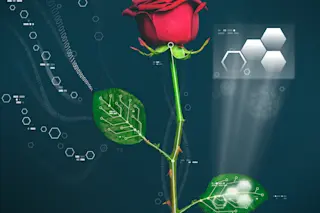Lou Barbe wouldn’t call himself an avid gamer. As an ecologist at the Université de Rennes in France, he spends most of his time with plants. But one game has captured his imagination since childhood: StarCraft, the popular online strategy franchise in which players accrue resources and construct armies of alien fighters to wage war across extraterrestrial landscapes. “I’m not at all a very good player,” says Barbe. “But I understand what’s going on.”
While playing StarCraft II — the latest version of the game — a few years ago, Barbe realized that amid all the explosions and lasers, something else was happening. StarCraft was behaving a lot like an ecosystem. “We have an environment,” says Barbe. “We have resources. We have organisms that are competing in this environment. That’s the definition of an ecosystem.”
Barbe filed the idea away. Then, in 2019, DeepMind, the AI research subsidiary of Google’s ...















